MediaTek Demo Next Gen Wi-Fi 7 and Claims it Will Kill Cables

Taiwanese fabless semiconductor company MediaTek claims to have conducted the “world’s first live demo” of the next generation Wi-Fi 7 (802.11be) wireless networking technology, which is theoretically capable of peak data speeds up to around 40Gbps and “can be a true wireline / Ethernet replacement.”
At present the fairly recent Wi-Fi 6 (802.11ax) standard is still slowly finding its feet in the commercial market, which is of course to say nothing of the fact that Wi-Fi 6E (adds support for the 6GHz band) and Wi-Fi 6 Release 2 (some additional enhancements) are yet to even reach that stage of adoption. But the march of technology never stops.
Back in 2020 we reported that the next generation Wi-Fi 7 (802.11be – Extremely High Throughput) standard was also starting to take shape and the first draft of that was published last year. But the IEEE’s related work group still doesn’t expect to have a completed and fully approved standard ready until around March 2024, although beta kit does have a historic tendency to go on sale before such dates.
The new stand appears to be targeting a peak data speed capability of 40-46Gbps (Gigabits per second), which compares with 9.6Gbps under Wi-Fi 6. Naturally, the real-world experience will always end up being significantly less than this due to differences in hardware designs and interference etc., but Wi-Fi 7 does have a lot of key advancements in its favour.
Key Wi-Fi 7 Advancements
➤ Multi-Link Operation (MLO) that enables devices to both simultaneously transmit and receive across different bands (2.4GHz, 5GHz and 6GHz) and channels. Wi-Fi 6 could already harness several links simultaneously, but these links are usually independent, and MLO seeks to change that in order to make efficient use of the channel resources.
➤ Channel size of up to 320MHz (up from 160MHz with Wi-Fi 6)
➤ Support for 4096-QAM (Quadrature amplitude modulation) OFDMA (up from 1024-QAM)
➤ Support for 16×16 Multi-User, Multiple-input, Multiple-output (MU-MIMO) technology (up from 8xX UL/DL MU-MIMO).
NOTE: Wi-Fi 7 could also enable the use of additional spectrum bands between the 1Ghz and 7GHz+ range, but that may depend upon availability (regulation).
In short, Wi-Fi 7 should deliver significantly faster data speeds and much lower (faster) latency times. This may help to explain why MediaTek’s recent demos, based on an early Wi-Fi 7 draft, are being heralded as proof that the new standard could mean the end of Ethernet cables for networking. In reality, we doubt that will be the case for everything (real-world performance rarely matches the headlines), although WiFi has already replaced cables for a lot of things.
Alan Hsu, Corporate VP at MediaTek, said:
“The rollout of Wi-Fi 7 will mark the first time that Wi-Fi can be a true wireline/Ethernet replacement for super high-bandwidth applications. MediaTek’s Wi-Fi 7 technology will be the backbone of home, office and industrial networks and provide seamless connectivity for everything from multi-player AR/VR applications to cloud gaming and 4K calls to 8K streaming and beyond.”
MediaTek claims that their “world’s first” demo showed how its Wi-Fi 7 Filogic technology “can achieve the maximum speed defined by IEEE 802.11be” and demonstrates its multi-link operation (MLO) technology working. However, these claims were not supported in the announcement by any useful technical evidence or test results.
MediaTek also doesn’t state exactly what was achieved during their demo, at what power levels, over what distance, using what antenna design, or indeed anything that might actually be useful to know. But on the flip side they state that “Wi-Fi 7 will deliver 2.4X faster speeds than Wi-Fi 6“, which doesn’t quite equate to the theoretical peaks being promise by Wi-Fi 7.
As it stands, the company expects their first Wi-Fi 7 kit to start hitting the market in 2023, which will probably be draft hardware. But at the current rate, that might mean some manufacturers are able to release early Wi-Fi 7 kit before others have even got their first Wi-Fi 6 Release 2 hardware out of the door.
Mark is a professional technology writer, IT consultant and computer engineer from Dorset (England), he also founded ISPreview in 1999 and enjoys analysing the latest telecoms and broadband developments. Find me on X (Twitter), Mastodon, Facebook and Linkedin.
« Openreach Publish Next 113 UK FTTP Broadband Rollout Areas UPDATE2
Latest UK ISP News
- FTTP (5508)
- BT (3513)
- Politics (2535)
- Openreach (2296)
- Business (2260)
- Building Digital UK (2243)
- FTTC (2042)
- Mobile Broadband (1971)
- Statistics (1787)
- 4G (1662)
- Virgin Media (1617)
- Ofcom Regulation (1459)
- Fibre Optic (1393)
- Wireless Internet (1389)
- FTTH (1381)






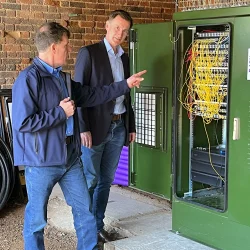

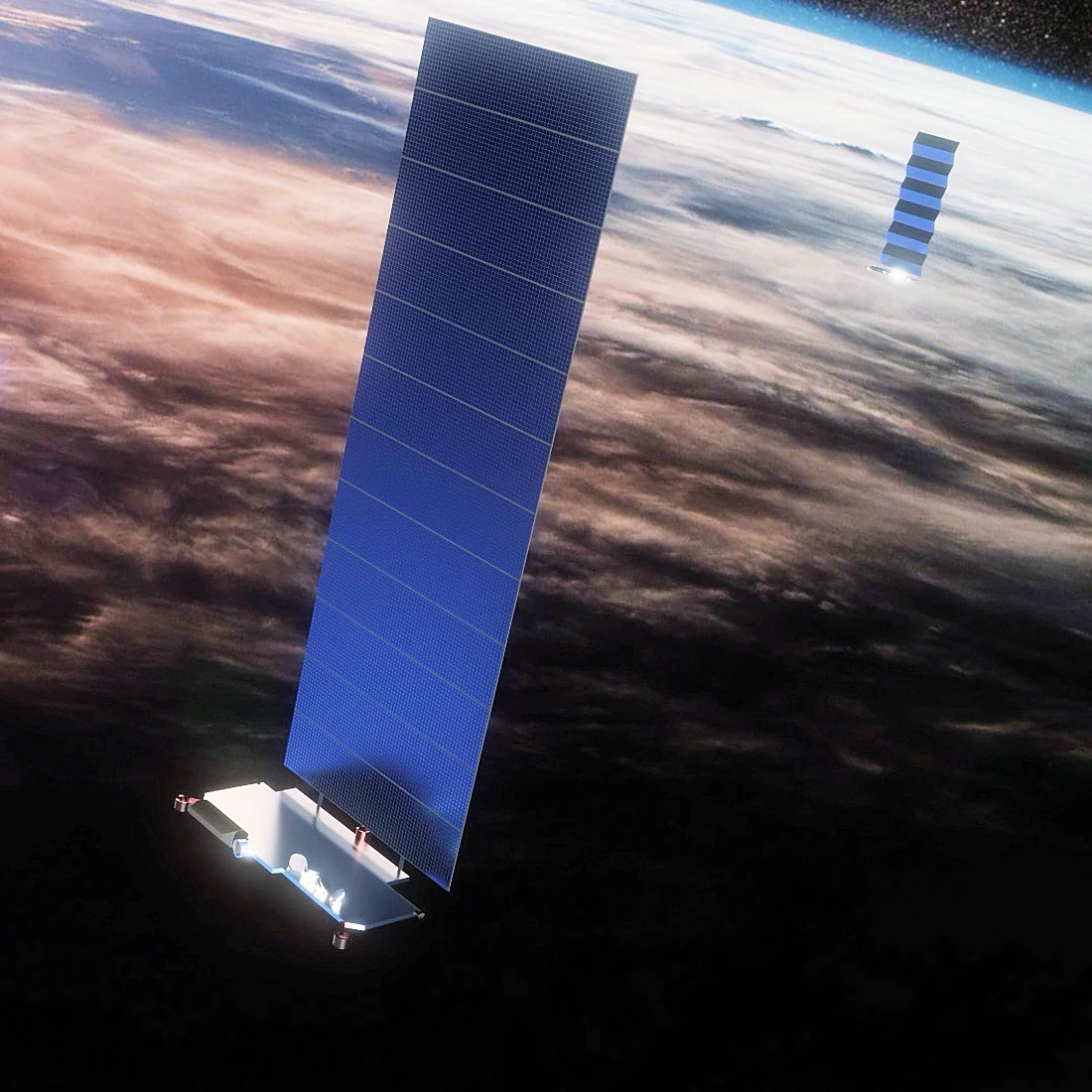



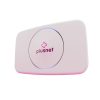

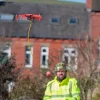








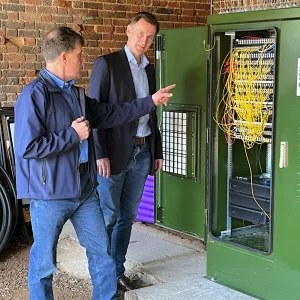





































Wireless is still shared medium and far more insecure than wired (either electrical or optical).
There will for sure be multiple applications for this tech but I seriously doubt it’ll ever be a “cable killer”.
When you say insecure, that depends how you’ve setup the security. In the same way you setup the security if someone plugs an ethernet cable into your switch, does it give complete access to your network?
I don’t think we are anywhere near the stage that wifi could kill off wired connections, but it could someday rival them.
Well, it’s far easier to sniff packets that are just broadcast to everywhere over the air than it is to have physical access to a switch and sniff packets that way (but by no means impossible, of course).
On public WiFi maybe, but on a private WiFi network that had been setup properly packet sniffing is not an issue.
What you’re saying was more valid 20 years ago
Sorry Sam, but I think you’re living in the past, with encryption these days, including encryption on even DNS requests, private WiFi using the latest standards is way more secure than it use to be.
@WibbledOff I was agreeing with you. I was replying to Andre, I forget this site doesn’t auto @ users when replying, my bad.
can I correct that for you?
wifi is in theory just as secure as a wire… provided that:
* a good key is used and is changed regularly
* the wifi drivers on client devices aren’t buggy/ vulnerable
* the wifi access points aren’t buggy/vulnerable
* the authentication servers used in enterprise environments aren’t buggy/vulnerable
I’ve visited friends at old employers and despite having left months before, my phone will still connect to their wifi as they don’t rotate the keys and use weak security 😉
mmm and latency?
yeah we don’t care about latency, people only want blazing downloads don’t they? WiFi is only fit for playing with your phone with.
you are fool we care about latency if latency is high that means you gonna to wait more time to upload or download things, you are just mf.
Until it travels through multiple 2 ft thick walls its cable for me.
I’ve always found WiFi unusable for gaming given periodic lag spikes, even with WiFi 6, until that’s solved, I’ll stick with Powerline/Ethernet.
Weird part is I don’t get such spikes when playing over 4G.
Powerline is a radio medium. It basically uses your home wiring as a giant antenna. Its susceptible to interference like WiFi is and has similar latency and flaws.
Just like DSL.
Only optical or true electrical circuits like Ethernet beat WiFi
@Sam Sorry but your comment made me laugh, you do know that ethernet cables use radio waves to. Cat 5E runs at 100Mhz and Cat 6 runs at 250Mhz.
Both home electrical wiring and ethernet cables use copper wires, just different frequency.
@WibbleDoff whilst wired Ethernet uses frequencies that are within the RF spectrum, being balanced pairs and therefore acting as a transmission line, the transmission mode is purely electrical. Any electromagnetic radiation or reception is incidental and undesired.
The unbalanced nature of telephony cabling (at frequencies above audio) is why they radiate and are susceptible to EM interference. House mains wiring is a million miles away from balanced pairs, so radiates horrendously. But the primary transmission mode remains electrical, not electromagnetic. It’s just that any nearby radio equipment trying to use the frequencies suffers..
tl;dr – don’t confuse the frequency of a signal with its transmission medium.
@MikeP Sorry to burst your bubble there, but of course ethernet is not electrical, otherwise by default you wouldn’t need PoE injectors lol.
Also because they use radio frequencies, just like any copper Internet connection, they are range limited, hence why it’s limited to 100 meters and even less for 10gbe which is only 30 meters.
@Sam
I have noticed that Powerline disconnects every now and then (turn plug on/off to reconnect) but once connected it’s very stable.
‘@MikeP Sorry to burst your bubble there, but of course ethernet is not electrical, otherwise by default you wouldn’t need PoE injectors lol.’
Send 200 mV down a cable it won’t be enough to power something requiring 500 mV, doesn’t mean it’s not electrical.
because you are :
1_close to server
2_close to tower
3_maybe no one connected to you network
OEMs still haven’t managed to roll out WiFi 6e routers yet (at least in the UK anyway). Can we get a move on that first?
That’s because 6ghz band isn’t approved by OFCOM yet.
Yes it is:
https://www.ispreview.co.uk/index.php/2020/07/ofcom-uk-opens-6ghz-radio-band-for-use-in-faster-home-wi-fi.html
Even with MLO the current issues with WiFi will still exist. WiFi over the next decade will only ever compete with cables if an AP is fitted in every room, even then you still need to run ethernet to each room. It works really well if you’re happy to be limited to gigabit speeds.
Going back to MLO, the lower frequency bands are near useless for high speed but the higher frequencies and bigger spectrum sound promising.
“WiFi over the next decade will only ever compete with cables if an AP is fitted in every room, even then you still need to run ethernet to each room.”
Utter rubbish. Not everyone lives in homes with 2m thick brick walls. My Netgear RAX200 easily provides full Wi-Fi coverage in every room without needing additional APs.
Jim, less emotions please.
I’m talking about speed, not signal. Yes you can get signal through several walls with one AP.
The reality is you can’t get 1000mbps even through the thinnest of walls. As soon as you lose line of sight you lose a good 50% of the bandwidth.
Now, even with an RAX200 and in the next room with thin walls, you’re never going to get speeds that compete with cabling.
THINK Jim, THINK.
@SamP I get 113MB/s to my Synology NAS using an Asus AX92U on WiFi 6, so not sure what you are testing on?
@WibbledOff – What a load of nonsense. MikeP is correct. Ethernet over Cat5e is electrical. Cat5e doesn’t use radio waves. In regards to your PoE comment you are confusing power with electrical. They are not the same.
@Anonymous I think you’ve made a slight error with your reply lol
“The reality is you can’t get 1000mbps even through the thinnest of walls.”
Again utter rubbish. I’m getting in excess of 1000 Mbps over Wi-Fi 6 anywhere in the house when doing file transfers between 2 PCs with Wi-Fi 6 cards. With actual link rates of 2400 Mbps. It’s a relatively new house with wafer thin walls. Would I get those kind of speeds if I had thick brick walls? Of course not. I really think you should move with the times.
@Jim sounds like either your WiFi 6 router or WiFi adapter on your computer is not using a 160Mhz channel. Maybe you need to look into that as my house is a large house, over 4 floors and I have no issues.
@WibbledOff
I do NOT have any issues with Wi-Fi 6 and yes my router and Wi-Fi 6 clients are using 160 MHz channel width.
@Jim 2400Mbps would be 80Mhz, if it’s 160Mhz then it would be double that.
@WibbledOff
The Intel AX200 pci cards I’m using cannot go above 2400 Mbps (they’re only 2×2) so my link rates are limited to that.
https://www.intel.co.uk/content/www/uk/en/products/sku/189347/intel-wifi-6-ax200-gig/specifications.html
AFAIK you have to use 3×3 or 4×4 or 8×8 Wi-Fi 6 clients to get massively higher link speeds.
@Jim That’s why you shouldn’t be bashing wifi 6 , you could always upgrade your WiFi card to use the full 160Mhz channel.
@Jim you’re being hypocritical by saying I’m talking nonsense yet talk nonsense yourself.
I’ve rolled out Wi-Fi 6 for various sites/companies using the full 160mhz and you CANNOT get 1000mbps through walls or even around corners (blocked line of sight).
Just accept you’re wrong rather than doubling down and proving your ignorance whilst poorly attempting to flex on an overprice router that you probably don’t even own.
I’m no longer going to engage with you as you’re just spouting rubbish to save your ego.
@WibbledOff
I think you’re replying to the wrong person LOL
I’m perfectly happy with wifi 6 speeds in home (I never said otherwise), easily getting 1000+ Mbps over wifi 6 anywhere in my 4 bedroom 2 storey home, albeit with cardboard walls (aka new build). Its the other poster Sam P who is convinced that wifi 6 cannot go beyond 1000 Mbps in real world throughput, they’re obviously still living in the wifi a/b/g/n/ac era.
@WibbledOff Yes I can get the full 1000mbps (or more) over Wi-Fi 6 providing I have direct line of site with the AP. The point I’m making is that you can’t through walls of any type, sometimes even glass is enough to lower the speeds by a fair bit.
Heck, even someone using some of the 5ghz spectrum nearby can be enough to lower your speeds (sometimes even by a lot!)
Don’t get me wrong, I absolutely love Wi-Fi 6, it just isn’t a cable replacement for an entire building (for gigabit speeds) Unless you have an AP in every room. And now I’m doing a full circle.
“I’ve rolled out Wi-Fi 6 for various sites/companies using the full 160mhz and you CANNOT get 1000mbps through walls or even around corners (blocked line of sight).”
Yet I can:
https://i.postimg.cc/tgGrzXgj/linkrate-AX200.jpg
(yes these are the link rates but throughput is around half that which is > 1000 Mbps)
As for owning a RAX200, here’s the proof again:
https://i.postimg.cc/fLLYcFYs/RAX200.jpg
@Sam P I’ve got my WiFi 6 setup using a mesh network of only two Asus AX92U which covers a house of 4 floors at 13 and half thousand square feet. Not sure how much more coverage you need?
“I’ve rolled out Wi-Fi 6 for various sites/companies using the full 160mhz “
And I bet you’re installing el-cheapo 2×2 Wi-Fi 6 APs so hardly surprising they’re not performing as well as high end 4×4 Wi-Fi 6 routers. You get what you pay for…
@WibbledOff
Coverage isn’t an issue, we’re talking about getting gigabit speeds to compete with ethernet in every room. Your mesh system most certainly does not provide gigabit speeds on a different floor to where the AP is located.
Not sure even why I’m wasting my time here, muppets!
@Sam P I’m so sorry you’re not capable of setting your WiFi up correctly. But maybe if you weren’t so rude I could have point you in the right direction.
My WiFi works perfectly fine and gets top speed through out my house.
@Sam P
There is far better performing Wi-Fi 6 kit than 2×2 Wi-Fi access points which I’m guessing is what you’ve always installed wrt Wi-Fi 6 APs.
I have a RT-AX88U and I’ve just been running some tests. I have a gig connection and next to the router I’m getting anywhere between 800-900. I go into the hallway and I’m getting 600-700. I go upstairs into the room above the router and I’m getting 400-500. Upstairs, one room across into the bathroom I’m getting 150-200ish depending on which way I face.
‘Ethernet over Cat5e is electrical. Cat5e doesn’t use radio waves.’
I’d consider a look at what RF is. It may not be going through the air but using copper as a conductor however it’s definitely using radio waves. ‘Radio waves’ describes a frequency band.
I’m curious how they are delivering power over their Wi-Fi system. If they’re not then, however good it might be, it’s not a replacement for cables carrying data and power.
The trouble with Wi-Fi is it uses a shared transmission medium. Unless someone is fortunate enough to live well away from other people and their Wi-Fi, it will always be fighting other access points and devices and experiencing interference, this causes lost packets and variable latency. You may find it works great on your new kit until next door get their new mesh network based on Wi-Fi 6E or 7 and start using the same frequencies you are on, and given the huge bandwidth needed for these speeds, there are few non-overlapping channels to escape to, and speeds plumet.
Wired is always going to be better, it may not be as fast if still stuck on 1Gig Ethernet compared to version 7 or higher on Wi-Fi, but its latency is close enough to zero to not be a factor and it’s consistent day in day out. Not to mention the convenience of Power over Ethernet as an option as well.
Quite agree, the theoretical speeds are great. But how many old devices and access points are still using 802.11n (whatever that is in the new naming system)
Is it still the case that one device on a lower version drops speeds for everyone or can you have wireless n, ac, ax and be all on the same network without dropping to the lowest agreed speed for everyone?
Lots of interesting opinions, But overshadowed by Quite possibly one of the funniest I’ve read in a while.
“@MikeP Sorry to burst your bubble there, but of course ethernet is not electrical, otherwise by default you wouldn’t need PoE injectors lol.”
Possibly i’m missing the sarcasm if it was what was intended, otherwise it’s maybe best to keep your technical comments to yourself.
Yes, that one cracked me up. Quality material 🙂
Yeah, I gave up contributing to that thread when that particular pearl of wisdom surfaced…